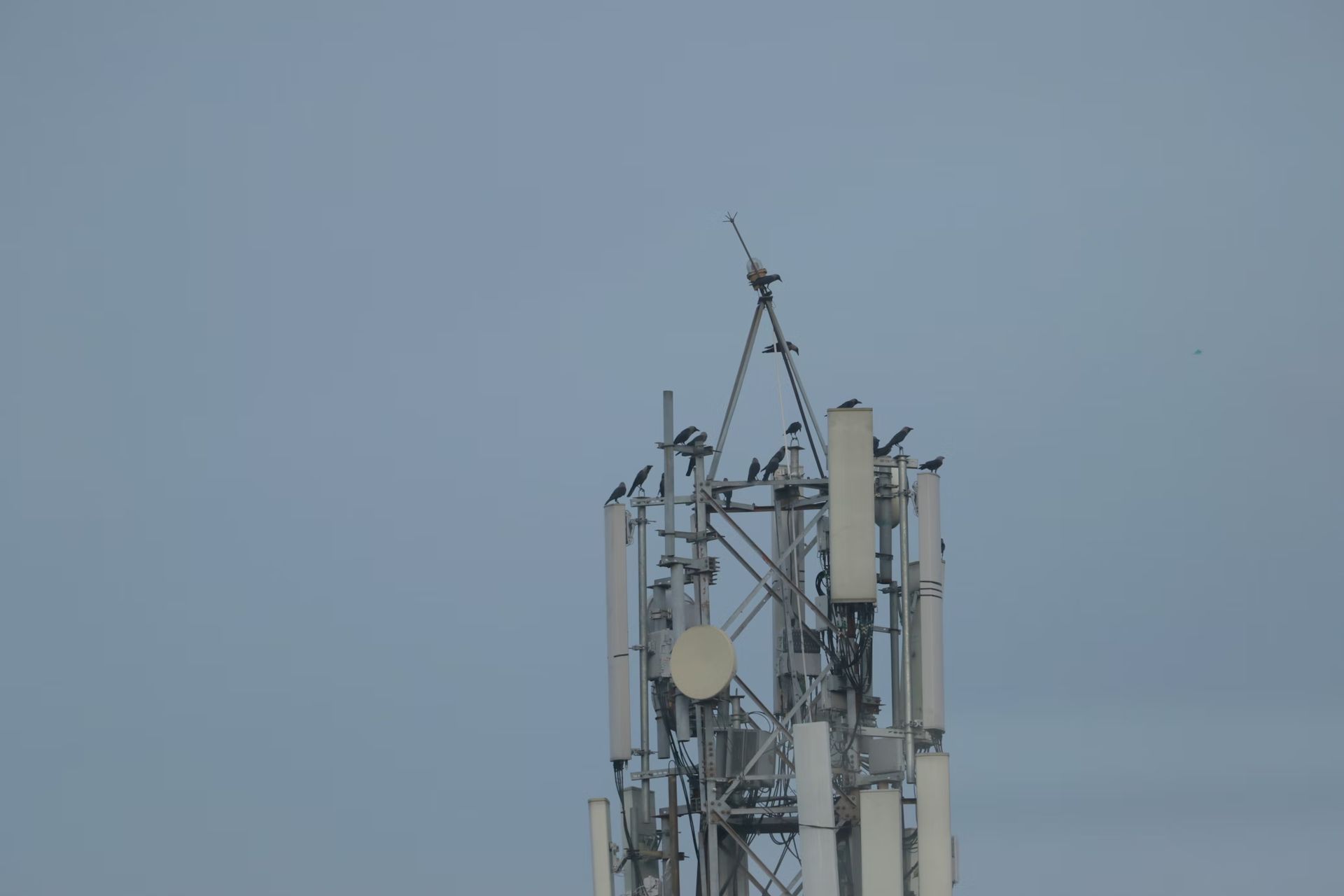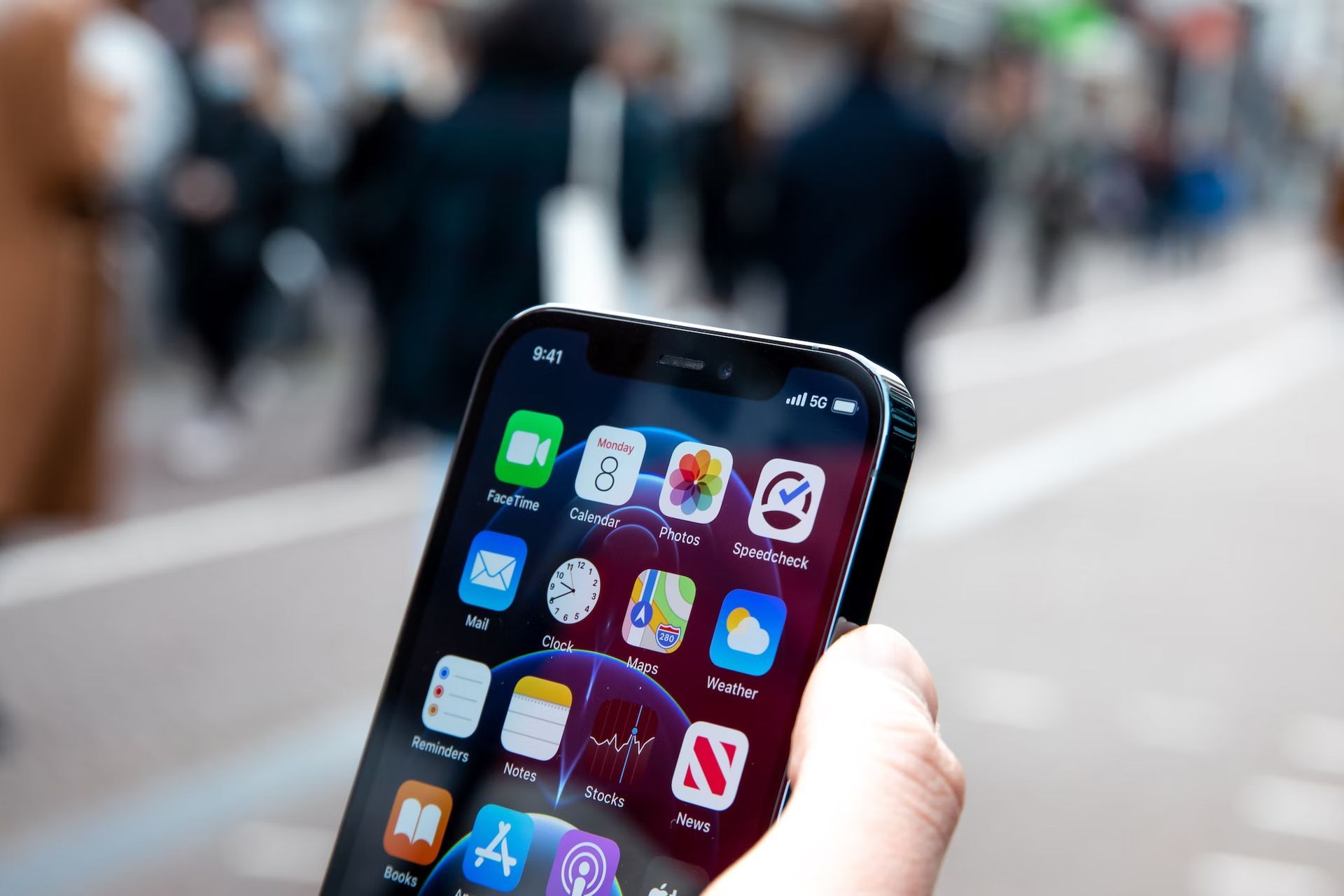NB-IoT (Narrowband Internet of Things) is a low-power technology that is designed for Internet of Things (IoT) applications and other low-data rate communication requirements. It uses narrowband radio frequency spectrum and advanced power management techniques to enable efficient use of the available spectrum and extend the battery life of IoT devices. NB-IoT is based on the LTE (Long-Term Evolution) cellular wireless technology and has been standardized by the 3rd Generation Partnership Project (3GPP) as a global wireless communication standard for IoT applications.
What is NB-IoT?
NB-IoT is a low-power wide-area network (LPWAN) technology that is designed for Internet of Things (IoT) devices and other applications that require a low data rate and long battery life. It is a type of cellular network technology that uses a narrowband radio frequency spectrum to provide secure and reliable communication for IoT devices.
NB-IoT operates in the licensed spectrum and uses advanced modulation and multiple access techniques to enable efficient use of the available spectrum and support a large number of connected devices. It also uses advanced power management techniques to extend the battery life of IoT devices, which is critical for applications such as remote sensors and other devices that are not easily accessible for maintenance or battery replacement.

In addition to its low power and long-range capabilities, Narrowband Internet of Things also offers improved security and reliability compared to other IoT technologies. It uses a dedicated network infrastructure and robust signaling mechanisms to provide reliable communication, even in challenging environments such as dense urban areas or deep underground.
Overall, NB-IoT is a key technology for enabling the IoT and supporting the growing number of connected devices that are being deployed in a wide range of industries, from agriculture and manufacturing to smart cities and healthcare.
Is NB-IoT secure?
Because the underlying technology is less complex than conventional cellular modules, OEMs can design, produce, and deploy their products more easily.
The same tried-and-true security and privacy protections of LTE mobile networks are also available, including support for;
- user identity confidentiality,
- entity authentication,
- data integrity,
- and mobile device identification.
NB-IoT use case requirements
NB-IoT addresses the needs of many IoT use cases because it:
- Efficiency: Half-duplex communications are used by NB-IoT, which means that neither the module nor the cellular base station can simultaneously transfer data. This usage of half-duplex communications, along with NB-slower IoT’s data rates, use of a single antenna, and lower Radio Frequency (RF) bandwidth, minimize the complexity and, consequently, the cost of NB-IoT devices. When compared to standard LTE Cat-1 cellular modules, these simplifications allow NB-IoT modules to cost as much as 50% less.
- Power consumption: Thanks to functions like Power Savings Mode (PSM) and eDRX (Extended Discontinuous Reception), as well as NB-capacity IoT’s to optimize the amount of energy used for small data transmissions, battery-powered edge modules, it can transmit data with up to 75% less power than conventional LTE Cat-1 modules. As a result, manufacturers of IoT applications can create gadgets with a battery life of ten years or longer.
- More capacity: Up to one million NB-IoT devices can connect to the network per square kilometer because of the utilization of narrowband transmission, signaling optimization, adaptive modulation, and hybrid automated repeat request (HARQ).
- Better coverage: Narrowband Internet of Things makes use of a lot of signal repetition. Large signal repetition enhances NB-coverage IoT’s by 5–10X over competing cellular technologies. However, it reduces data throughput and increases power consumption. NB-IoT devices can now connect to cellular networks even if they are underground, far within a building, or in a rural area because of this improved coverage.
How much does NB-IoT cost?
The cost of Narrowband Internet of Things can vary depending on a number of factors, including the specific implementation, the type of equipment and infrastructure used, and the scale of deployment. As such, it is difficult to provide a precise cost estimate for NB-IoT.
The cost of implementing NB-IoT can include the cost of acquiring and installing the necessary equipment and infrastructure, such as base stations, antennas, and other hardware. It can also include the cost of operating and maintaining the network, as well as the cost of purchasing or leasing the necessary spectrum.

In addition, the cost of NB-IoT can also depend on the type of deployments, such as a standalone NB-IoT network or a network that is integrated with an existing cellular network. The cost can also vary depending on the scale of deployment, with larger deployments typically requiring more equipment and infrastructure.
Overall, the cost of implementing NB-IoT will depend on a range of factors and can vary depending on the specific implementation and requirements.
Is NB-IoT bidirectional?
Yes, NB-IoT is a bidirectional communication technology, which means it supports both uplink and downlink communication.
In bidirectional communication, data can be transmitted from the device to the network (uplink) and from the network to the device (downlink), allowing for two-way communication. This is in contrast to unidirectional communication, where data can only be transmitted in one direction (either from the device to the network or from the network to the device).
Rounding up: The importance of having the optimal IoT connectivity
Narrowband Internet of Things uses advanced multiple access techniques, such as time-division multiple access (TDMA) and frequency-division multiple access (FDMA), to enable efficient use of the available spectrum and support bidirectional communication. This allows IoT devices to send data to the network and receive data from the network, enabling a wide range of applications such as remote sensor monitoring, asset tracking, and other IoT use cases.
Overall, the bidirectional communication capabilities of NB-IoT are an important part of its design and enable a wide range of IoT applications.
NB-IoT and Massive IoT
In practice, you will frequently hear comparisons between NB-IoT and LTE-M, even though these are the two options that the mobile industry ecosystem of manufacturers, service providers, and network operators are advocating.
Suppose you’ve never heard of LPWAN or someone else described it as new. In that case, it’s not because it falls under a brand-new category of wireless IoT communications, but rather because cellular LPWA networks have finally been deployed in many regions after a long delay caused primarily by various competing technologies that were being proposed and the business decisions made by the mobile industry.
Massive IoT, another industry term that simply refers to those “billions” of devices that typically transmit small data volumes, frequently sent at intervals (so no constant transmission but now and then), and with the need for long battery lives as with NB-IoT and others, is also sometimes used to classify LPWAN.
Before discussing specs, use cases, innovations, and other topics, a few words about standards and standardization might be helpful if you’re interested in understanding certain specifics. The mobile (cellular) industry’s standardization body, 3GPP (3rd Generation Partnership Project), uses numbered “releases” in which the details of new standards and improvements are set at a certain point in time. These updates include a number of mobile technologies that members of the mobile industry have developed.
Is NB-IoT 5G or 4G?
Narrowband Internet of Things is not considered as a 4G or 5G technology. It is a low-power wide-area network (LPWAN) technology that is designed specifically for Internet of Things (IoT) applications and other low-data rate communication requirements.
4G and 5G are cellular network technologies that are used to provide high-speed mobile broadband and other advanced communication services to mobile devices such as smartphones and tablets. These technologies use a wideband radio frequency spectrum and advanced modulation, and multiple access techniques to support high data rates and support a large number of connected devices.

In contrast, NB-IoT is designed to support a low data rate and long battery life for IoT devices and other applications that do not require the high data rates and capabilities of 4G or 5G. It uses a narrowband radio frequency spectrum and advanced power management techniques to enable efficient use of the available spectrum and extend the battery life of IoT devices.
Overall, while 4G and 5G are focused on providing high-speed mobile broadband services, NB-IoT is designed to support a wide range of IoT applications and enable the growth of the IoT.
What is the difference between NB-IoT and LTE?
NB-IoT (Narrowband Internet of Things) and LTE (Long-Term Evolution) are both wireless communication technologies, but they are designed for different purposes and have some key differences.
Narrowband Internet of Things is a low-power wide-area network (LPWAN) technology that is designed specifically for Internet of Things (IoT) applications and other low-data rate communication requirements. It uses a narrowband radio frequency spectrum and advanced power management techniques to enable efficient use of the available spectrum and extend the battery life of IoT devices.
IoT sensors smarten everyday objects with awareness and cognition
In contrast, LTE is a cellular network technology that is used to provide high-speed mobile broadband and other advanced communication services to mobile devices such as smartphones and tablets. It uses a wideband radio frequency spectrum and advanced modulation, and multiple access techniques to support high data rates and support a large number of connected devices.
Some key differences between NB-IoT and LTE include:
- Data rates: NB-IoT is designed for low data rate applications and can support data rates of up to 200 kbps, while LTE can support data rates of up to several hundred Mbps.
- Spectrum: NB-IoT operates in the licensed spectrum, while LTE can operate in both licensed and unlicensed spectrum.
- Range: NB-IoT has a longer range than LTE due to its use of a narrowband spectrum and advanced power management techniques.
- Power consumption: NB-IoT is designed for low power consumption and long battery life, while LTE devices typically have higher power requirements.
Overall, while LTE is focused on providing high-speed mobile broadband services, NB-IoT is designed to support a wide range of IoT applications and enable the growth of the IoT.
The latency of NB-IoT
In comparison to LTE-M, Narrowband Internet of Things is not as well suited for situations that require very low network latency. Because of this, it is not as commonly used in applications that need near-real-time data. In these cases, LTE-M is a better fit. Both NB-IoT and LTE-M play a role in the development of 5G, where extremely low network latency is necessary for applications that require speed and are typically critical. The choice of communication standard is not the only factor to consider here.
In addition to the differences between NB-IoT and LTE-M in terms of network latency, it is worth noting that edge computing and IoT can also play a role in analyzing sensor data quickly. Edge computing allows for data analysis to take place closer to the source without the need for communication with a cloud or data center.
As for the latency of NB-IoT specifically, it is typically equal to or less than 10 seconds, with a range of 1.6 to 10 seconds. In comparison, LTE-M has delays of 100 to 150 ms.
The mobility of NB-IoT
One key difference between NB-IoT and LTE-M is that NB-IoT does not fully support mobility, whereas LTE-M does. This means that Narrowband Internet of Things may not be as effective in situations where handover between cells is necessary. However, there have been improvements to this in 3GPP Release 14, which has made some enhancements to the characteristics of NB-IoT. In contrast, LTE-M also supports voice.
Despite the limitations of NB-IoT in terms of mobility, it is still widely used in applications and cases involving fixed assets and devices. This is evident in the types of applications and uses cases mentioned earlier. It is important to note that this does not mean that NB-IoT cannot be used for mobile assets and devices but rather that its capabilities in this area are limited.

There are real-world NB-IoT applications with trackers, shared bicycle services, environmental applications with a moving component but low data throughput, smart logistics, and more.
More specifically, Narrowband Internet of Things requires the device to periodically reselect the cell while in motion, whereas LTE-M does not. So it’s far less appropriate for mobile (and the reselection of cells has an impact on battery life as it consumes power). Fixed assets, such as smart meters and point-of-sale terminals, are typically the focus of NB-IoT, although they are not the only ones. For “real seamless mobility,” LTE-M can be counted as the preferred technology.
NB-IoT vs LoRa
NB-IoT (Narrowband Internet of Things) and LoRa (Long Range) are both low-power wide-area network (LPWAN) technologies that are designed for Internet of Things (IoT) applications and other low data rate communication requirements. They both use a narrowband radio frequency spectrum and advanced power management techniques to enable efficient use of the available spectrum and extend the battery life of IoT devices.
There are some key differences between NB-IoT and LoRa, including:
- Spectrum: Narrowband Internet of Things operates in the licensed spectrum, while LoRa can operate in both licensed and unlicensed spectra.
- Data rates: NB-IoT can support data rates of up to 200 kbps, while LoRa can support data rates of up to 50 kbps.
- Range: LoRa has a longer range than Narrowband Internet of Things due to its use of a proprietary spread-spectrum modulation technique.
- Power consumption: NB-IoT is designed for low power consumption and long battery life, while LoRa devices typically have higher power requirements.
- Network infrastructure: Narrowband Internet of Things uses a dedicated network infrastructure, while LoRa uses a distributed network architecture with decentralized control.
Overall, while both NB-IoT and LoRa are designed for low-data rate IoT applications, they have some key differences in their technical implementation and capabilities.
The future NB-IoT applications
For the widespread deployment of sensors, affordable modems are essential. It is necessary to improve the procedures for monitoring and to report various variables, such as temperature and humidity. Data rate and latency should be decreased for applications that involve a lot of sensors. The claim that NB-IoT would increase efficiency is supported by the fact that this solution can meet these standards. With single-tone devices, Narrowband Internet of Things devices have shown they can handle peak physical layer data rates as low as 100–200kbps or even much lower.
We can also take a look at other aspects of device optimization. For instance, LTE MBB requires two antennas, whereas NB-IoT devices just require a single receiver antenna. Therefore, there is just one receiver chain required for the ratio and baseband demodulator.
IIoT and edge computing are gaining traction in many industries
One benefit of narrow bandwidth is the difficulty of analog-to-digital and digital-to-analog conversion, channel estimate, and lower buffering (200kHz from NB-IoT vs. 1.4MHZ to 20MHZ from other technologies).
Agriculture
Farmers will have advanced tracking options thanks to Narrowband Internet of Things connectivity, so a sensor with a u-blox NB-IoT module can send an alert if an animal’s movement is unusual. These sensors could be used to track environmental characteristics, including pollution, noise, rain, and soil characteristics like temperature and humidity.
Smart metering
Gas and water meter monitoring can be accomplished with NB-IoT using frequent, tiny data transmissions. Rollouts of smart meters face significant network coverage challenges. Meters frequently appear in challenging locations, such as cellars, subterranean tunnels, or isolated rural areas. To solve this problem, NB-IoT has outstanding coverage and penetration.

Smart cities
Local government can use Narrowband Internet of Things to manage street lights, decide when trash cans need to be emptied, locate open parking spaces, keep an eye on the weather, and assess the state of the roads.
Smart apartments
Sensors with NB-IoT connectivity can manage lighting and temperature and transmit notifications about building maintenance problems. Additionally, NB-IoT can serve as the building’s backup broadband connection. In some security solutions, sensors may even be directly connected to the monitoring system using LPWA networks, as this configuration is both simpler to install and maintain and more difficult for an intruder to disable.
Consumers
Wearable technology will receive long-range connectivity through NB-IoT, which is especially useful for tracking people and animals. Similar to this, NB-IoT can be used to track the health of people with age- or chronic-related diseases.






